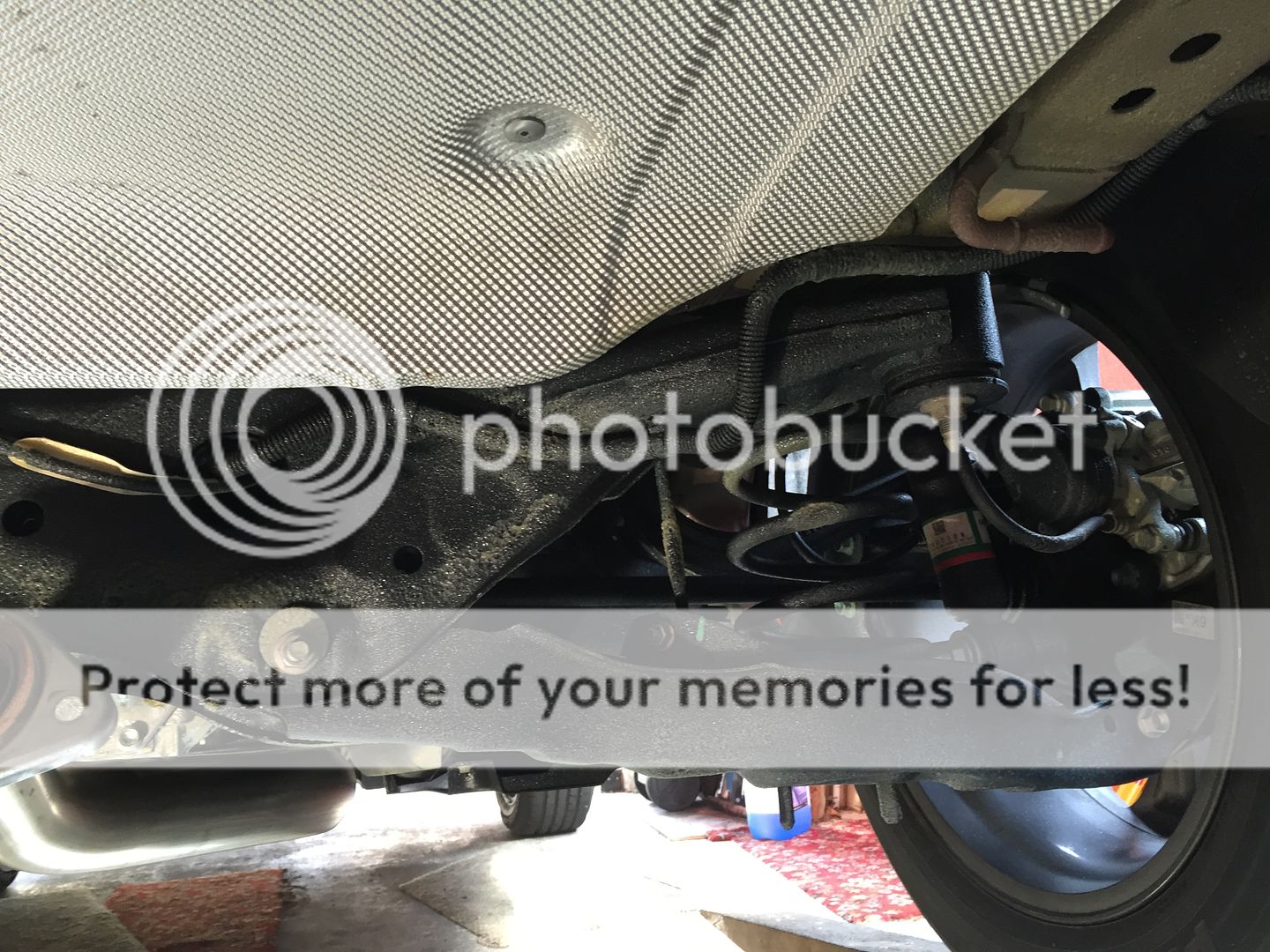Watching this tread with great interest. I live in NYC and we use road salt here. Looking at the photos from Jaman, IMHO I don't think that is an excessive amount of rust for four Canadian winters. I do my own oil changes, so if I were under the car an observed that I might choose to hit it with a some of rustoleum rust reformer, but honestly to my eye it looks pretty normal for any four year old car in a place where road salt is used, and where no remedial steps (such as post winter cleaning of the undercarriage or undercoating) were taken. I had, and now my GF has a 1998 Toyota Rav4 that spent its life on Long Island. You should see the underside of that thing. Its still structurally sound. Like I said...just my humble opinion. Is there anyone out there that has a 4 year old vehicle from a place that uses road salt, and who hasn't taken remedial steps to protect the undercarriage that has NO rust? As far as the hatch struts, that is certainly a design defect. Perforation corrosion is what concerns me. That undercarriage looks normal....to me.
You are using an out of date browser. It may not display this or other websites correctly.
You should upgrade or use an alternative browser.
You should upgrade or use an alternative browser.
Just joined the club and question on rust
- Thread starter Fish1
- Start date
- :
- 2014 QX70 AWD
I'll have to take a peek under mine. We use quite a bit of road salt in my area. I don't think its necessarily rusting faster than average, but I try to run it thru the car was at least once a month during the winter months...
I haven't seen any interior rust either, but maybe I'm not looking in the appropriate area(s)?
I haven't seen any interior rust either, but maybe I'm not looking in the appropriate area(s)?
Rust like that after a few years even with heavy use of salt I believe is unacceptable with today's coatings and materials to look worse than a car that is 13 years old is not acceptable. How can Mazda get away with this? I love how this car drives and looks but also want one that will last. Also very happy with fuel economy so far getting around 30.5MPG on my 100 mile round trip commute.
2005 toyota matrix/pontiac vibe - 225K miles driving 100 miles a day
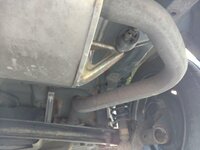
2014 CX-5 (seen 2 winters) -28K miles
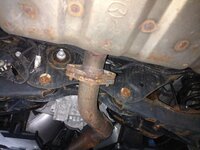
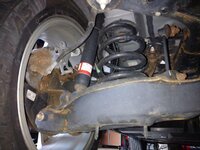
2005 toyota matrix/pontiac vibe - 225K miles driving 100 miles a day

2014 CX-5 (seen 2 winters) -28K miles


Last edited:
- :
- Plano, Texas, USA
You can use "Attachment" icon in Advanced mode to upload the pictures, maximum 4 for a post.
Although we don't see too much snow here but each time it snows, salt is everywhere as we don't have capability to plow away snow accumulation on the road. After 19 winters I don't see any rust situation like jaman's on my 1998 Honda CR-V. Most undercarriage area if not protected by plastic cover has some sort of anti-rust coating on them from factory. That should prevent most rust situation caused by road salt. BTW, I seldom wash the undercarriage after the winter season either.
Although we don't see too much snow here but each time it snows, salt is everywhere as we don't have capability to plow away snow accumulation on the road. After 19 winters I don't see any rust situation like jaman's on my 1998 Honda CR-V. Most undercarriage area if not protected by plastic cover has some sort of anti-rust coating on them from factory. That should prevent most rust situation caused by road salt. BTW, I seldom wash the undercarriage after the winter season either.
Ok, so we've all talked about the undercarriage rust, but what are some option for DIY to prevent this? Are there good coatings that can be easily applied that will help prevent rust? I' know of rust bullet and a few others but have never actually used any of them.
https://www.mazdausa.com/siteassets/pdf/brochures/2017-mazda-cx-5/post-launch/2017-mazda-cx-5-brochure.pdf
Mazda states in its 2017 CX-5 on-line brochure (see the above link) Every new 2017 Mazda CX-5 is protected by a: . . . 5-year / Unlimited-mileage Warranty Against Body Rust-Through (Anti-Perforation Limited Warranty). Notice that it says Body Rust-Through. I take this to mean that if its a rusting mechanical component or non-body component, its not covered. So youre covered for rust for the first 5 years. After that, youre on your own. It also doesnt state whether the warranty is transferrable if you buy a used CX-5. Youd have to read the fine print or inquire to Mazda.
The streets are liberally salted where I live during winter. I had my current car Ziebarted and it helped. A downside of Ziebart is the yearly inspections that must be done after the initial application. You have a six week window each year to bring your car in for an annual inspection. Miss the window and you lose your Ziebart warranty. The yearly inspections cost about $50 (the last time I went; it undoubtedly costs more now). Other aftermarket rust proofers may require yearly inspections also but I havent checked Krown and others yet. One year I missed the window and lost my Zbt warranty and I never went back. I told the Ziebart manager that yearly inspections are too often and that it should be every 3 years instead. The manager responded by saying If we did that, wed have to close up shop and go out of business. And guess what? The shop did go out of business a few years later. (Not all Ziebart shops, just the one located near me).
Consumers Reports says aftermarket rust proofing is not needed on current new vehicles. I havent decided yet on aftermarket rust-proofing yet but I havent bought a CX-5 yet. Im waiting for 2018.
Mazda states in its 2017 CX-5 on-line brochure (see the above link) Every new 2017 Mazda CX-5 is protected by a: . . . 5-year / Unlimited-mileage Warranty Against Body Rust-Through (Anti-Perforation Limited Warranty). Notice that it says Body Rust-Through. I take this to mean that if its a rusting mechanical component or non-body component, its not covered. So youre covered for rust for the first 5 years. After that, youre on your own. It also doesnt state whether the warranty is transferrable if you buy a used CX-5. Youd have to read the fine print or inquire to Mazda.
The streets are liberally salted where I live during winter. I had my current car Ziebarted and it helped. A downside of Ziebart is the yearly inspections that must be done after the initial application. You have a six week window each year to bring your car in for an annual inspection. Miss the window and you lose your Ziebart warranty. The yearly inspections cost about $50 (the last time I went; it undoubtedly costs more now). Other aftermarket rust proofers may require yearly inspections also but I havent checked Krown and others yet. One year I missed the window and lost my Zbt warranty and I never went back. I told the Ziebart manager that yearly inspections are too often and that it should be every 3 years instead. The manager responded by saying If we did that, wed have to close up shop and go out of business. And guess what? The shop did go out of business a few years later. (Not all Ziebart shops, just the one located near me).
Consumers Reports says aftermarket rust proofing is not needed on current new vehicles. I havent decided yet on aftermarket rust-proofing yet but I havent bought a CX-5 yet. Im waiting for 2018.
- :
- Plano, Texas, USA
Ziebart? They still exist? I used it 40 years ago but at that time new cars would rust through in 2~3 years if you didn't do any rust-proof treatment. I really thought the rust issue is a thing of past and additional rust-proof treatment is unnecessary until I saw those comparison pictures ⋯
Rust like that after a few years even with heavy use of salt I believe is unacceptable with today's coatings and materials to look worse than a car that is 13 years old is not acceptable. How can Mazda get away with this? I love how this car drives and looks but also want one that will last. Also very happy with fuel economy so far getting around 30.5MPG on my 100 mile round trip commute.
2005 toyota matrix/pontiac vibe - 225K miles driving 100 miles a day
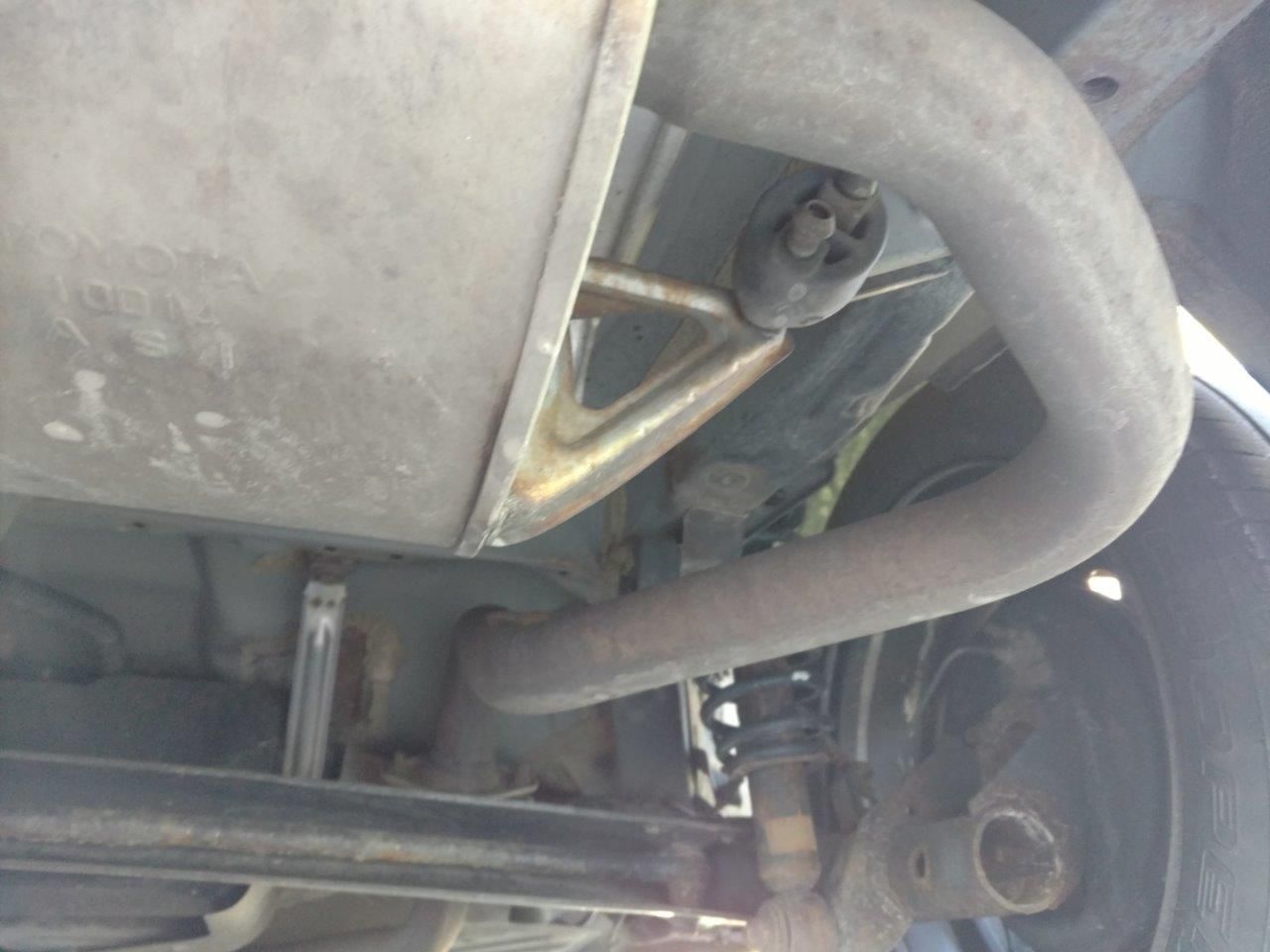
View attachment 216618
2014 CX-5 (seen 2 winters) -28K miles
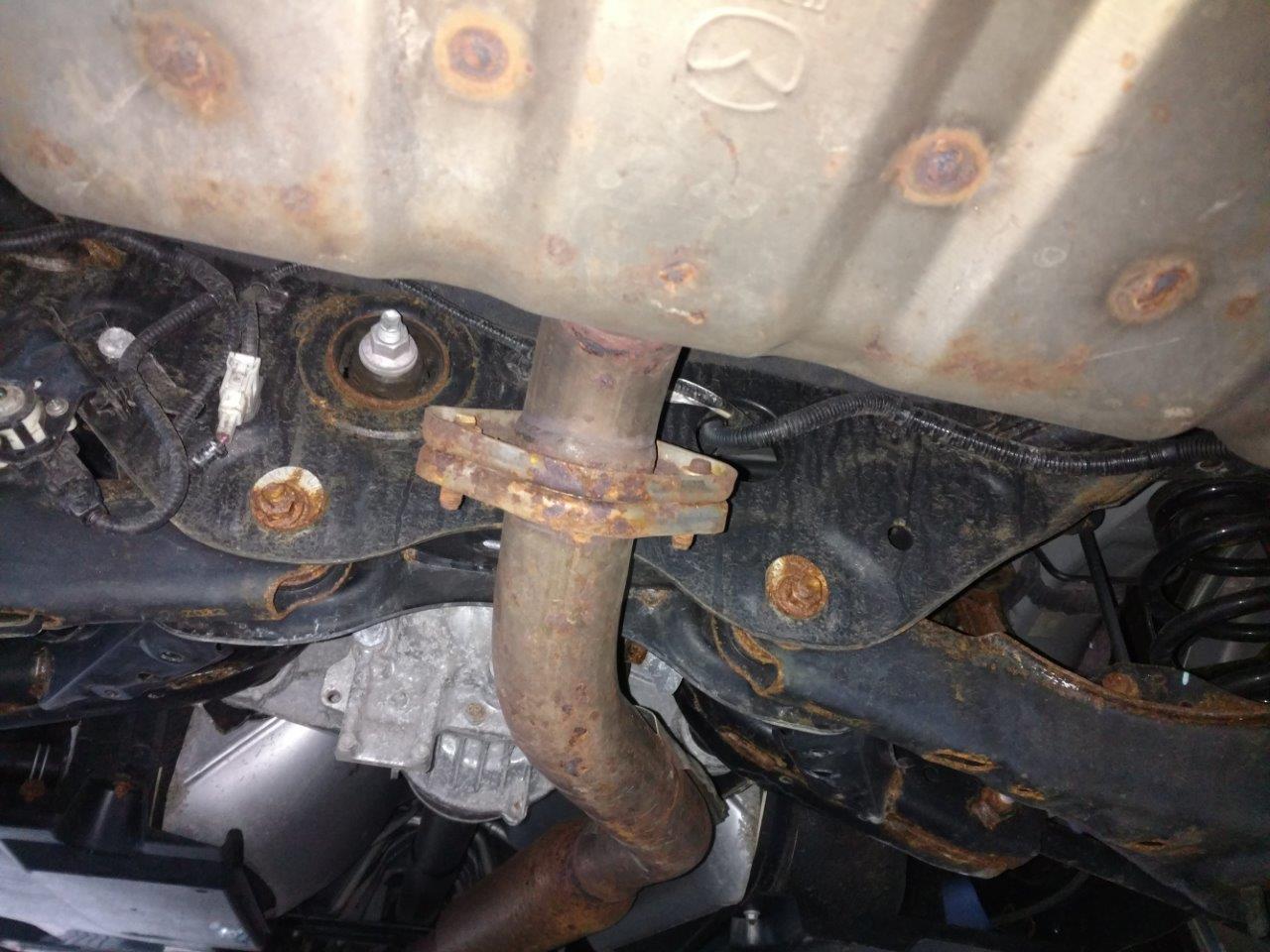
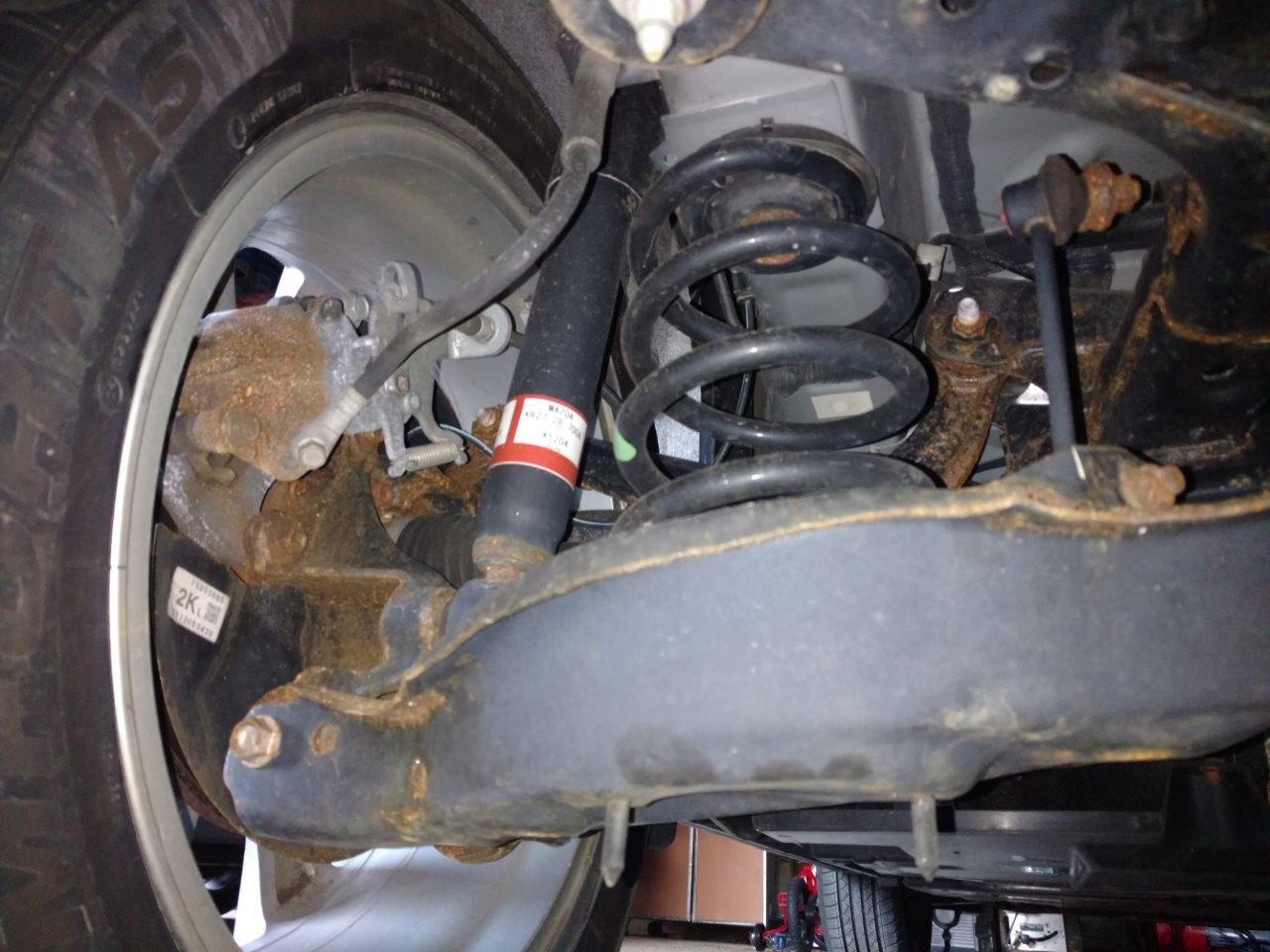
View attachment 216616
View attachment 216617
Yes, Ziebart still exists. They get along by performing other car services in addition to car rust-proofing. I had my 1984 Nissan Ziebart rust-proofed. An initial Ziebart rust-proofing cost about $250 in 1984. But back then, cars were much more susceptible to rust than newer cars are.
Another thing about Zbts warranty: it only covers rust that starts from the inside of the metal.
The photos above show rusting non-body components. Im wondering if Mazdas rust warranty will be in effect because the warranty above states Body Rust-Through? Good question to ask Mazda.
Another thing about Zbts warranty: it only covers rust that starts from the inside of the metal.
The photos above show rusting non-body components. Im wondering if Mazdas rust warranty will be in effect because the warranty above states Body Rust-Through? Good question to ask Mazda.
Ok, so we've all talked about the undercarriage rust, but what are some option for DIY to prevent this? Are there good coatings that can be easily applied that will help prevent rust? I' know of rust bullet and a few others but have never actually used any of them.
There are products meant to deal with rusty outdoor furniture metal such as this. https://www.amazon.com/dp/ (commissions earned)
There may be something for car applications.
PVQ said:I live in NYC and we use road salt here. Looking at the photos from Jaman, IMHO I don't think that is an excessive amount of rust for four Canadian winters. I do my own oil changes, so if I were under the car an observed that I might choose to hit it with a some of rustoleum rust reformer, but honestly to my eye it looks pretty normal for any four year old car in a place where road salt is used, and where no remedial steps (such as post winter cleaning of the undercarriage or undercoating) were taken. I had, and now my GF has a 1998 Toyota Rav4 that spent its life on Long Island. You should see the underside of that thing. Its still structurally sound. Like I said...just my humble opinion. Is there anyone out there that has a 4 year old vehicle from a place that uses road salt, and who hasn't taken remedial steps to protect the undercarriage that has NO rust? As far as the hatch struts, that is certainly a design defect. Perforation corrosion is what concerns me. That undercarriage looks normal....to me.
^^^^ This
As PVQ said all of the photos above look typical for cars going through Canadian-like winters without additional protection. As soon as you hit the first winter surface rust will start forming on the underside to anything exposed. It's unreasonable to expect it to look new-ish for years in a climate such as ours where the roads are regularly treated with the harsh chemicals that they are.
If you want to avoid it or mitigate it as much as possible you need to treat yearly with something like Krown (or similar). Krown is just one of the more popular ones here in Canada and the one in particular that I use. When re-selling here to a private party it actually makes the car more valuable to meaningful buyers when you can prove this has been done. The payoff isn't immediate - it's when the car still looks good 7-10 years down the road.
Or buy a "one-time" treatment when new that will still only come with a 7-10 year warranty. As mentioned above those usually come with annual required inspections, though there are those that don't. Half of what you're buying here is the warranty / insurance policy.
If you plan to keep your car a long time the $130 / year on a Krown treatment is quick and well worth it. And if you get it done the first time within their specified timelines on a new car, and if you continue to repeat yearly you will have a warranty on it as long as you keep up the annual re-sprays.
If you don't plan on keeping your car for more than 6 ish years I wouldn't bother with anything at all these days as it won't make a difference. What's pictured is in no way structural, it's all just typical surface rust on the underside where exposed to the elements. As mentioned you can DIY fight it with a wire brush and spray bombing if you so desire, or start getting it sprayed.
Don't get those electronic modules. They're worthless in cars and all you're buying is an insurance policy. At least with the sprays you're getting something that will help along with the insurance policy.
This looks interesting https://www.youtube.com/watch?v=o1InzXNp7Pw
Just glad I live in a fairly dry arid region.
Just glad I live in a fairly dry arid region.
This stuff works great on parts you can soak and then repaint. It converts the rust. I wonder if can soak a towel/rag and wrap or attach in another way and let it do its magic.
https://www.amazon.com/dp/ (commissions earned)
I just checked out under my wifes 9 year old BMW and looks much better than my Mazda... Yes rust is expected in salt use areas but there are ways car manufactures can reduce it to get much better performance than what I am seeing.
https://www.amazon.com/dp/ (commissions earned)
I just checked out under my wifes 9 year old BMW and looks much better than my Mazda... Yes rust is expected in salt use areas but there are ways car manufactures can reduce it to get much better performance than what I am seeing.
- :
- 2014 QX70 AWD
Just checked. Mine looks quite good for two Maine winters. Happy with what I see.
But as usual, I find adding photos to this site from my iPhone to be a royal pain in the ass. I think I've got two rear undercarriage pics in my account but they won't show up in the library. Might not be able to get them into this thread until tomorrow.
Edit- pics added.


But as usual, I find adding photos to this site from my iPhone to be a royal pain in the ass. I think I've got two rear undercarriage pics in my account but they won't show up in the library. Might not be able to get them into this thread until tomorrow.
Edit- pics added.
Last edited:
Just checked. Mine looks quite good for two Maine winters. Happy with what I see.
That does look awesome...hoping I have similar luck with my 2017
- :
- Plano, Texas, USA
It's very reasonable to expect no surface rust formed in undercarriage area after 2 or 3 winters. Did you see OP Fish1 comparison pictures between his 2005 Toyota Matrix and 2014 Mazda CX-5 in the same winter environment? We don't see any rust on these "exposed" suspension bolts and nuts on his 12-year-old Toyota. My 1998 Honda CR-V don't show any rust in the similar area after 19 winters with road salt although it may not as much as in the North. Actually those suspension bolts and nuts, like the bolts used on liftgate struts, do have protection to prevent the rust. They're all at least zinc plated or better galvanized. Only poor quality zinc plated bolts and nuts would show any sign of rust after short period of time exposing the road salt. Not to mention several members have said they've found rust under the seat area which has nothing to do with the road salt!As PVQ said all of the photos above look typical for cars going through Canadian-like winters without additional protection. As soon as you hit the first winter surface rust will start forming on the underside to anything exposed. It's unreasonable to expect it to look new-ish for years in a climate such as ours where the roads are regularly treated with the harsh chemicals that they are.
If you have been with this forum long enough, rust issue has always been one of the complains discussed. Rusted rear brake components are the most common ones. I've seen one post even complained the liftgate has rusted through in the license plate area!
- :
- Plano, Texas, USA
Actually I wouldn't be too happy if my 2016 CX-5 has alraeady had these surface rust forming on few suspension bolts and nuts.Just checked. Mine looks quite good for two Maine winters. Happy with what I see.
But as usual, I find adding photos to this site from my iPhone to be a royal pain in the ass. I think I've got two rear undercarriage pics in my account but they won't show up in the library. Might not be able to get them into this thread until tomorrow.
Edit- pics added.
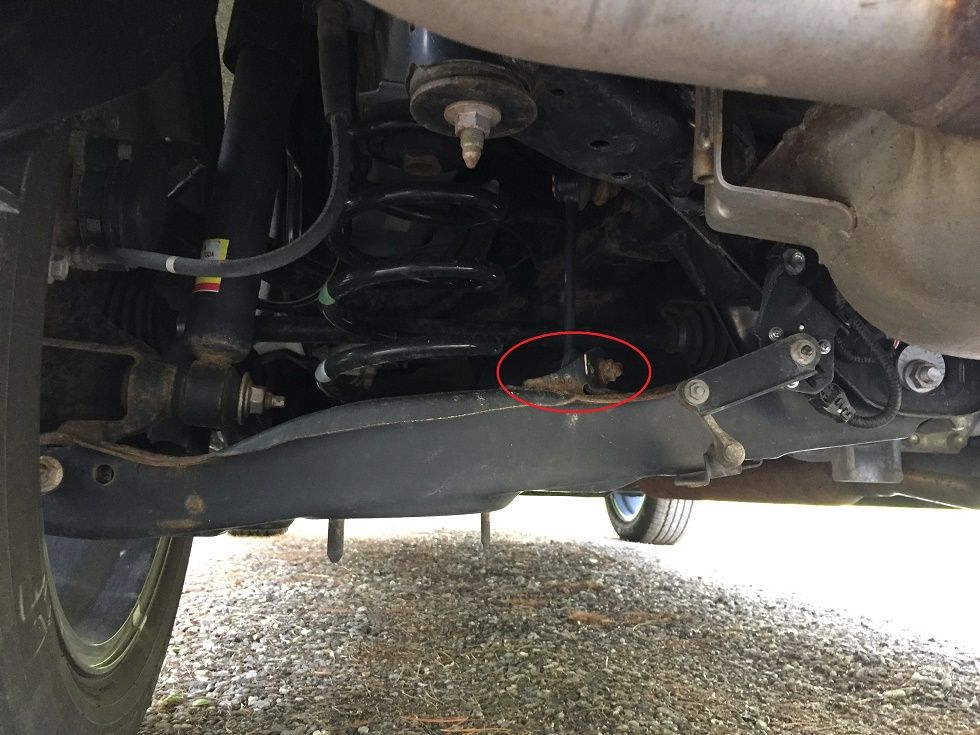
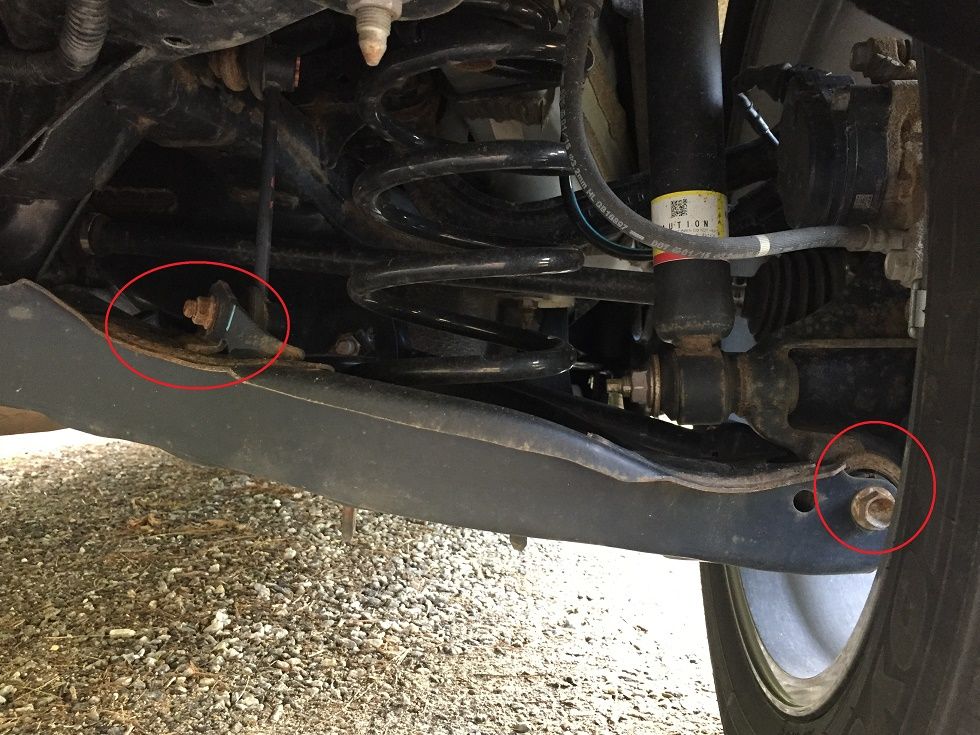
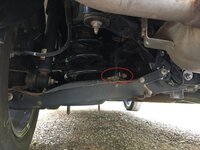
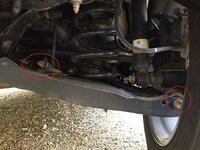
- :
- 2022 2.5GT
It's very reasonable to expect no surface rust formed in undercarriage area after 2 or 3 winters. Did you see OP Fish1 comparison pictures between his 2005 Toyota Matrix and 2014 Mazda CX-5 in the same winter environment? We don't see any rust on these "exposed" suspension bolts and nuts on his 12-year-old Toyota. My 1998 Honda CR-V don't show any rust in the similar area after 19 winters with road salt although it may not as much as in the North. Actually those suspension bolts and nuts, like the bolts used on liftgate struts, do have protection to prevent the rust. They're all at least zinc plated or better galvanized. Only poor quality zinc plated bolts and nuts would show any sign of rust after short period of time exposing the road salt. Not to mention several members have said they've found rust under the seat area which has nothing to do with the road salt!
If you have been with this forum long enough, rust issue has always been one of the complains discussed. Rusted rear brake components are the most common ones. I've seen one post even complained the liftgate has rusted through in the license plate area!
These comments border on ridiculous. I've had several Toyota RAV4s and all of the underside nut and bolt heads start to show surface rust in no time and any of the Japanese and German brands are no better. The CX-5s are no worse than any other brand and the ones that do suffer have usually not had regular cleaning or at some stage in their life have lived near to the coast.
Last edited:
- :
- 2022 2.5GT
^^^^ This
As PVQ said all of the photos above look typical for cars going through Canadian-like winters without additional protection. As soon as you hit the first winter surface rust will start forming on the underside to anything exposed. It's unreasonable to expect it to look new-ish for years in a climate such as ours where the roads are regularly treated with the harsh chemicals that they are.
If you want to avoid it or mitigate it as much as possible you need to treat yearly with something like Krown (or similar). Krown is just one of the more popular ones here in Canada and the one in particular that I use. When re-selling here to a private party it actually makes the car more valuable to meaningful buyers when you can prove this has been done. The payoff isn't immediate - it's when the car still looks good 7-10 years down the road.
Or buy a "one-time" treatment when new that will still only come with a 7-10 year warranty. As mentioned above those usually come with annual required inspections, though there are those that don't. Half of what you're buying here is the warranty / insurance policy.
If you plan to keep your car a long time the $130 / year on a Krown treatment is quick and well worth it. And if you get it done the first time within their specified timelines on a new car, and if you continue to repeat yearly you will have a warranty on it as long as you keep up the annual re-sprays.
If you don't plan on keeping your car for more than 6 ish years I wouldn't bother with anything at all these days as it won't make a difference. What's pictured is in no way structural, it's all just typical surface rust on the underside where exposed to the elements. As mentioned you can DIY fight it with a wire brush and spray bombing if you so desire, or start getting it sprayed.
Don't get those electronic modules. They're worthless in cars and all you're buying is an insurance policy. At least with the sprays you're getting something that will help along with the insurance policy.
Exactly.
@yrwei52
Yes I saw the comparison pics. They look very similar to me, just different lighting conditions with less contrast on the vibe photo and a simpler suspension design making it look like it's less affected.
In all my experience here in our climate I haven't seen a vehicle without some sort of rust treatment not start showing signs of surface rust on the bottom side after a winter... It's what happens up here regardless of make / model. My point is it's normal here and if the OP wants to do something about it they should start getting the car treated.
@Anchorman
Thanks for making sense (I wish there was a like or thanks button on this forum)
Yes I saw the comparison pics. They look very similar to me, just different lighting conditions with less contrast on the vibe photo and a simpler suspension design making it look like it's less affected.
In all my experience here in our climate I haven't seen a vehicle without some sort of rust treatment not start showing signs of surface rust on the bottom side after a winter... It's what happens up here regardless of make / model. My point is it's normal here and if the OP wants to do something about it they should start getting the car treated.
@Anchorman
Thanks for making sense (I wish there was a like or thanks button on this forum)
Last edited:
Similar threads
- Replies
- 19
- Views
- 4K
- Replies
- 4
- Views
- 1K

